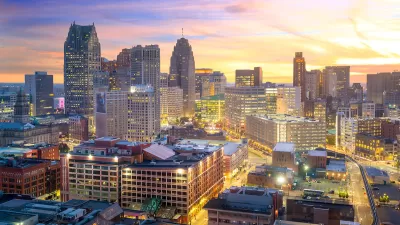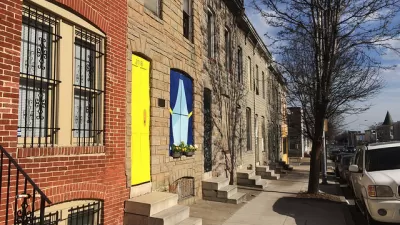Population shrinkage in cities like Flint, Michigan can be the perfect opportunity to employ 'smart decline' to make such cities denser and more livable.
"A big question facing urbanists is, what to do with shrunken cities? One possibility would be re-populating them. Could the New Homestead Act be revised to give a boost to places urban zones like Detroit? Isn't it more environmentally sustainable to re-populate existing cities where land has already been cleared, infrastructure is in place, and homes can be re-inhabited? Possibly. But in very distressed urban areas that cannot count on a resurgence of urban settlers, cities could be permanently re-scaled to something smaller. There's a new movement to reclaim urban areas by clearing parts of them and even letting them go back to nature."
"Instead of waiting for an economic or growth upswing that might never come, county and city planners can work with land bank properties to pick and choose which neighborhoods to invest in, and which to bulldoze. In other words, why fight for more growth when downsizing and re=greening a city might make the city more viable and more livable for those who remain? Business could be relocated into more dense, more transit friendly neighborhoods. Cleared areas could be turned into open space, parks, greenbelts, or even forest. It would be a reversal of urban sprawl."
FULL STORY: The incredible shrinking city!

Planetizen Federal Action Tracker
A weekly monitor of how Trump’s orders and actions are impacting planners and planning in America.

Congressman Proposes Bill to Rename DC Metro “Trump Train”
The Make Autorail Great Again Act would withhold federal funding to the system until the Washington Metropolitan Area Transit Authority (WMATA), rebrands as the Washington Metropolitan Authority for Greater Access (WMAGA).

DARTSpace Platform Streamlines Dallas TOD Application Process
The Dallas transit agency hopes a shorter permitting timeline will boost transit-oriented development around rail stations.

New Alaska Bitcoin Mine Would Burn as Much Energy as the State’s Largest Coal Plant
Fueled by “stranded” natural gas, the startup hopes to become the largest in the US, and to make Alaska an industry center.

New Jersey Duplexes Elicit Mixed Reactions
Modern, two-unit residences are proliferating in northern New Jersey communities, signaling for some a boon to the housing supply and to others a loss of historic architecture.

Renters Now Outnumber Homeowners in Over 200 US Suburbs
High housing costs in city centers and the new-found flexibility offered by remote work are pushing more renters to suburban areas.
Urban Design for Planners 1: Software Tools
This six-course series explores essential urban design concepts using open source software and equips planners with the tools they need to participate fully in the urban design process.
Planning for Universal Design
Learn the tools for implementing Universal Design in planning regulations.
Municipality of Princeton
Roanoke Valley-Alleghany Regional Commission
City of Mt Shasta
City of Camden Redevelopment Agency
City of Astoria
Transportation Research & Education Center (TREC) at Portland State University
US High Speed Rail Association
City of Camden Redevelopment Agency
Municipality of Princeton (NJ)





























